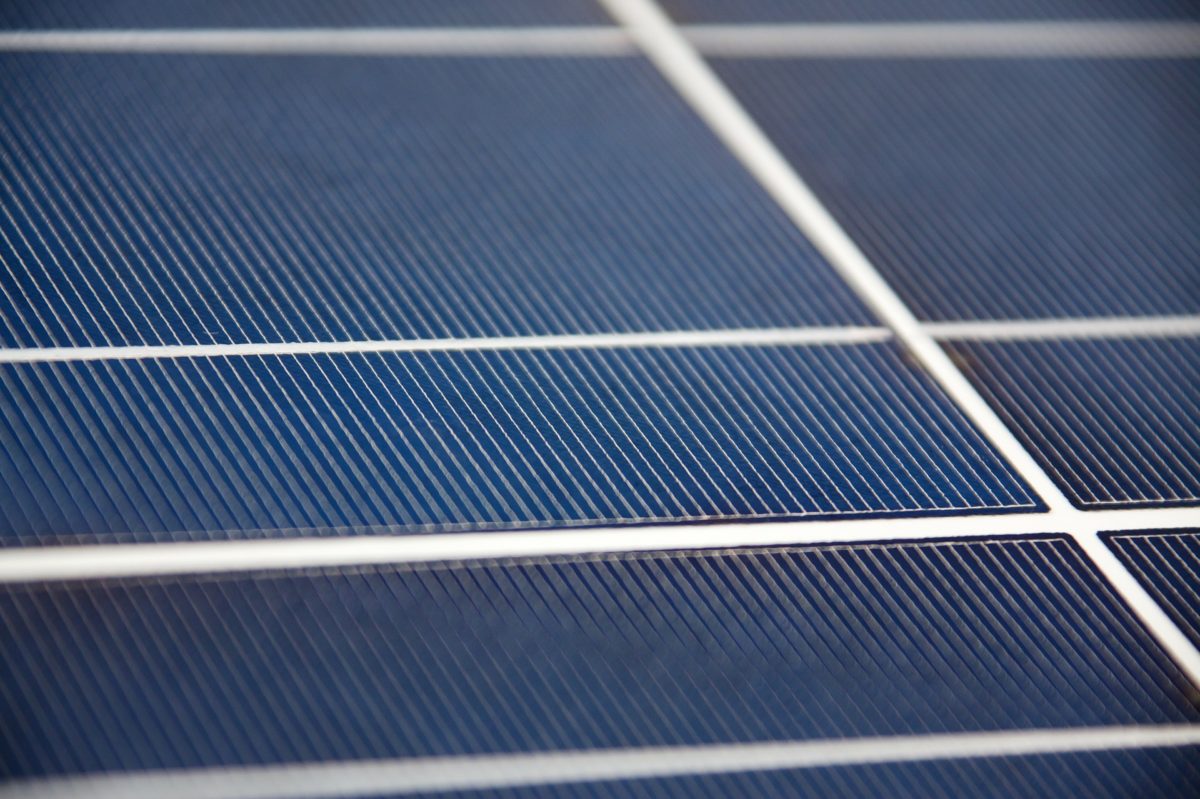From pv magazine International
Scientists at Japan’s Teikyo University have proposed a new method to quantitatively estimate voltage cells in operational PV modules.
The new model – which the researchers describe in A proposal of a procedure to estimate a standard line for contactless estimation of a solar cell voltage in a module using modulated light, recently published in Electrical Engineering in Japan – is designed to estimate cell voltages in solar modules by irradiating the cells with a weak modulated laser light.
The researchers said that they estimated a standard line model beforehand with partially shaded modules, and then applied that to the cell voltages in the panels under normal conditions without shading. The proposed model is based on the assumption that module-output response to a given cell irradiated with modulated light depends on a cell’s operating voltage.
“Utilizing the fact that cell voltage in a partially shaded module can be easily estimated, we proposed a quantitative model using a standard line to estimate cell voltage in a module under normal (nonshaded) conditions,” the research group stated.
When cells are irradiated with modulated light, their I‐V curve shifts toward positive current, and the current in other cells in a module remains unchanged, but the operating point changes only in the irradiated cell, they said. They tested the model on a PV module with five series‐connected identical polycrystalline cells through a solar simulator. The panel was irradiated with simulated sunlight from a height of about 36 cm, with the sunlight pulsing at 100 Hz around 120 W/m2.
Measuring the operating voltage of a solar cell in a PV module is key to detecting hot spots and other panel-degradation issues such as potential induced degradation (PID) peeling, cracking, and poor contacts. The research group said its proposed method can complement other technologies that measure cell voltages such as thermographic cameras, the measurement of I‐V curves, and electroluminescence (EL) imaging. They also claimed that the new model has the advantage of saving inspection time and effort, as the panels can be analyzed while they are actually operating, and not separated from the system.
The researchers said they could further improve the new method through the computational verification of modules that contain cells with varying performance levels. They could also rely on experimental verification using modules that operate under diverse conditions, and they could extend the standard line model to modules that contain cells with a low fill factor, among other things.
This content is protected by copyright and may not be reused. If you want to cooperate with us and would like to reuse some of our content, please contact: editors@pv-magazine.com.









1 comment
By submitting this form you agree to pv magazine using your data for the purposes of publishing your comment.
Your personal data will only be disclosed or otherwise transmitted to third parties for the purposes of spam filtering or if this is necessary for technical maintenance of the website. Any other transfer to third parties will not take place unless this is justified on the basis of applicable data protection regulations or if pv magazine is legally obliged to do so.
You may revoke this consent at any time with effect for the future, in which case your personal data will be deleted immediately. Otherwise, your data will be deleted if pv magazine has processed your request or the purpose of data storage is fulfilled.
Further information on data privacy can be found in our Data Protection Policy.